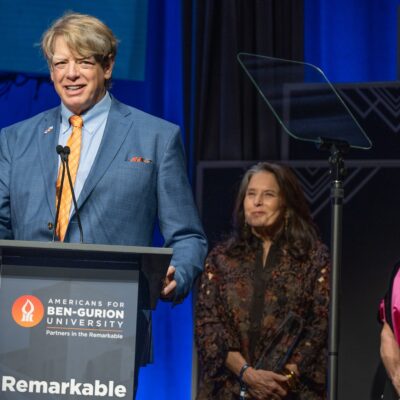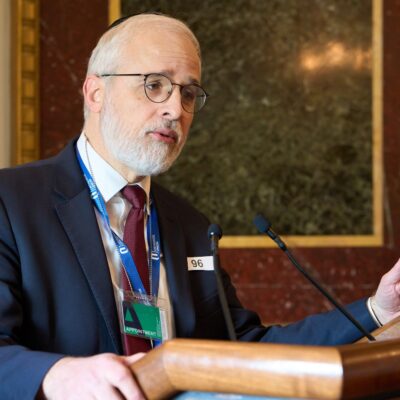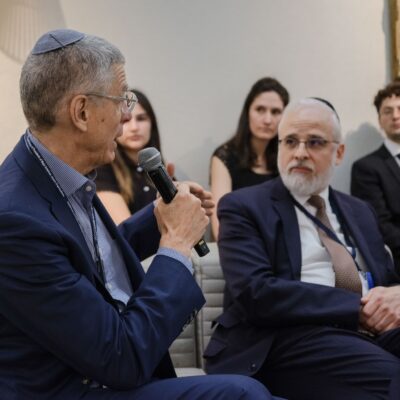Opinion
‘A Love Letter to the Business I Truly Love’
Board members and professionals alike have not established a culture which allows for board members to actually “show up.”

By Alicia S. Oberman
This is how Jerry Maguire refers to the “mission statement” he writes in Cameron Crowe’s 1996 movie. Jerry’s title of the piece, “The Things We Think and Do Not Say: The Future of Our Business,” has been a constant refrain repeating itself over and over in my head over the last year. I gather the statement itself was modeled after a memo written by Jeffrey Katzenberg, head of Disney in 1991, calling for Disney to refocus its business and focus again on “storytelling.”
In helping our foundation research and design the beta of the Board Member Institute for Jewish Nonprofits, a comprehensive board member training program recently launched in partnership with Northwestern University’s Kellogg’s School of Nonprofit Management, I have literally spent countless hours having conversations with volunteer leaders, professional leaders, and funders, representing all walks of life and experience levels across the country.
Before I get into my own love letter to the Jewish community, I do want to say that there is only one thing I have learned for sure. After more than a year sojourn through the contours of leadership in our sector, I have confirmed, at least for myself, that our leaders, without a doubt, have good intentions. Leaders, wearing all hats, in all positions, do want to help further the missions, causes and organizations they serve. So it is not the “why,” or the passion, that we lack. What we lack is often the “how.”
Board members often do not have the specific knowledge or required expertise to govern and steward our nonprofit organizations in this complex and evolving space. What it means to best serve an organization as a volunteer leader has dramatically shifted over the last several years, and we have not sufficiently prepared our current or future volunteer leaders to navigate this multifaceted and challenging landscape. Yet professionals are still perplexed when board members show up to meetings unprepared, unengaged, do not make thoughtful decisions, or they simply do not perform as one would expect given their level of professional success. But the truth is, there is simply no reason for board members to understand how nonprofits work. For the most part, no one has ever actually taught them.
Consider these statistics, taken from the Alliance for Nonprofit Management report from 2016, Voices of Board Chairs:
- Over half the board chairs indicated that they did nothing specific to become board chair. Only nineteen percent of respondents indicated that “becoming a chair was a natural progression.”
- Only twenty-four percent were recommended by their nominating committee when asked how they came to be board chair.
Consequently, the majority of nonprofits are not adequately preparing or nurturing their Chairs, the person who is supposed to be the most equipped and prepared to steward nonprofit organizations.
Moreover, with respect to board members as whole, current research supports the notion that many board members have never been shown how to read a nonprofit financial statement or understand best practices from a nonprofit perspective. According to the 2015 Survey on Board of Directors of Nonprofit Organizations, conducted by Stanford Graduate School of Business and Rock Center for Corporate Governance, many board members simply rely on monthly bank statements to monitor the finances of their organizations and forty-two percent of boards do not have an audit committee. In addition, most board members do not understand the importance of executive succession planning. According to that same study, two-thirds of boards do not have a succession plan in place for their current CEO or Executive Director, and three-quarters of board members could not immediately name a successor if the current CEO or Executive Director were to leave the organization tomorrow.
Lastly, while some board members may understand the importance of strategic planning or evaluation as it relates to the overall impact of a nonprofit organization as a concept, the Stanford Study also indicates that many board members are not comfortable with the quality of the data they receive to evaluate the performance of their organizations. Moreover, forty-six percent of board members have little to no confidence that the data that they do review fully and accurately measures the success of the organization in achieving its mission.
But it takes a certain kind of person to admit that they know what they don’t know. It is as if we have given board members a bike, and assumed because they are athletic, that they will just get on and know how to ride it.
Adding to the challenge, board members and professionals alike have not established a culture which allows for board members to actually “show up.” We do not know how to run effective and thought provoking board meetings. We don’t ask board members to take on additional responsibilities because we are afraid that we may be asking too much of them. We don’t leverage all the resources at their disposal beyond their contacts for resource development, when those resources might even be more valuable and eventually exponentially multiply the bottom line (and yes, nonprofits do indeed still have a bottom line). We don’t challenge them and help them to continue to develop their leadership trajectory in our community. We are not offering them enough of a value proposition to bring the A game that we should demand.
Board members have invested considerable time and money in our community’s organizations. Now it is our responsibility to invest in them.
Alicia S. Oberman is the Executive Director of the Jack and Goldie Wolfe Miller Fund. In response to this challenge, the Fund, in partnership with Kellogg’s Center for Nonprofit Management, the Marom Group and other strategic philanthropic partners, recently launched the application process of the inaugural cohort of the Board Member Institute for Jewish Nonprofits. While the first beta cohort will be Chicago-based (applications are open until October 31, 2017), the goal is to replicate and customize the program for different geographies and organizations.
For more information on the Institute, please visit kell.gg/kxjboard.

 Add EJP on Google
Add EJP on Google









